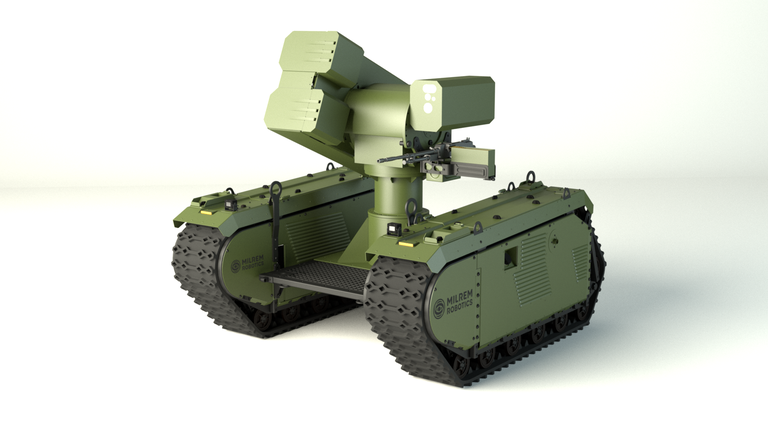This Tank-Killer Robot Could Revolutionize Ground Warfare
Will the battlefield of the future be robots fighting robots?
By Kyle Mizokami
MILREM
A new unmanned ground vehicle pairs a new and deadly anti-tank missile with a robotic platform. The result is a drone vehicle that can kill the most advanced tanks at ranges of up to three miles—and if it gets destroyed, you haven't lost any soldiers.
The combination of expendability with lethality forces the question: At what point will the battlefield simply become too lethal for humans?
The THeMIS unmanned ground vehicle (UGV) is the product of Milrem, an Estonian defense firm. THeMIS is designed as a multipurpose vehicle capable of acting as a battlefield scout, providing fire support, or even carrying cargo for ground troops. The vehicle features an open architecture and has hybrid diesel-electric drive with “low or zero” noise signature. It can be configured with a robotic arm or a .50 caliber machine gun and can carry payloads of up to 1,650 pounds.
THeMIS now has a new role that is its deadliest yet. Milrem partnered with European missile company MBDA to add the new Integrated MMP Precision Attack Combat Turret (IMPACT) to the low-slung vehicle. The turret includes two MMP missiles (Missile Moyenne Portée, or Medium Range Missile). One of the newest anti-tank missiles on the market, MMP has a range of 3.1 miles and penetrates up to 39.3 inches of hardened steel armor plating.
The arms race between tank designers and anti-tank weapon designers swings like a pendulum with the advantage going back and forth between tank and tank-killer multiple times over the last century. Recently, the advent of active protection systems, which use radar-directed projectiles to intercept incoming missiles, seemed to once again make manned tanks invulnerable.
But the rise of tank-killing drones changes the equation. In the past, the struggle was between a manned tank and a manned anti-tank weapon. Robotic weapons are attractive because they are cheaper than manned weapons and can be lost without a human toll. Human beings in tanks are now under threat by armies of inexpensive, deadly robotic vehicles without the ability to impose human costs—deaths and injuries—on their foes.
One obvious solution is to remove humans from the attacking tanks altogether, and indeed, that seems inevitable. The future battlefield could become a lonely place with robotic vehicles fighting robotic vehicles. Warfare could become almost entirely an industrial matter with little risk to humans.
What are the implications for human society? Would that make wars more likely or less? We are about to find out.
No comments:
Post a Comment